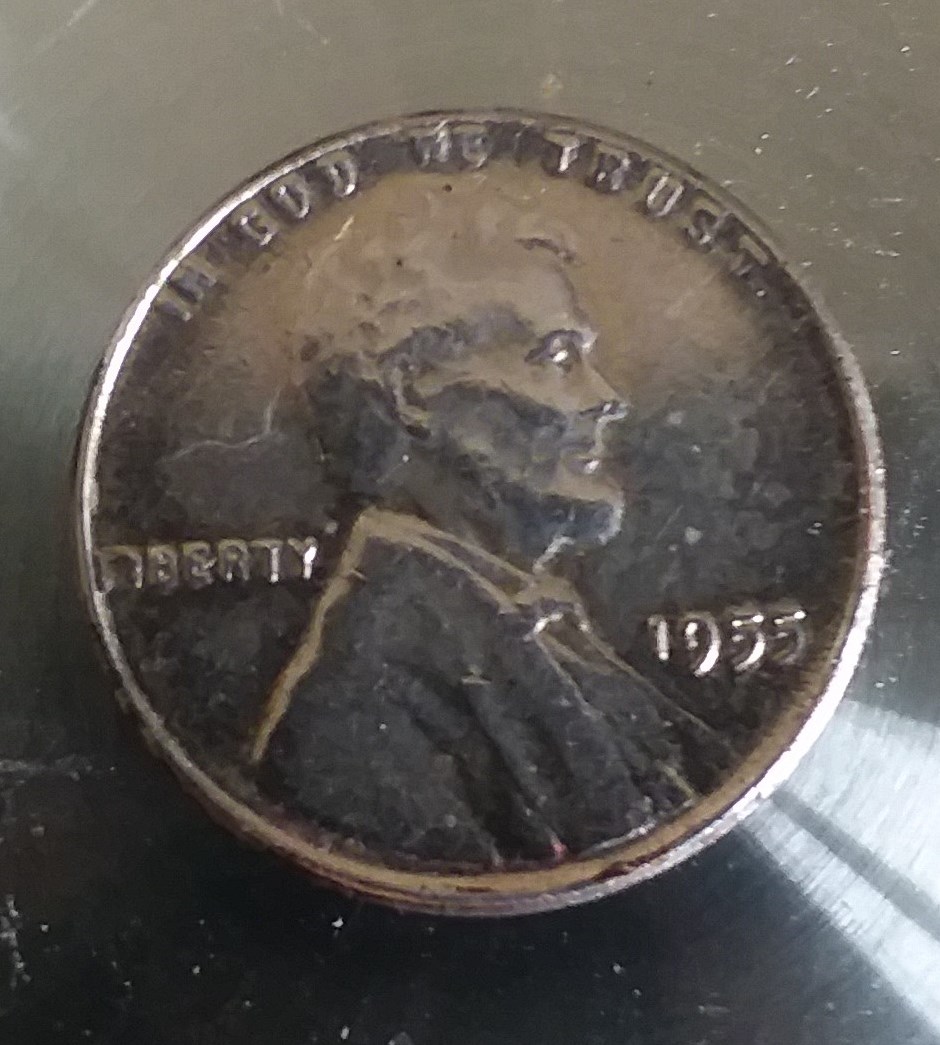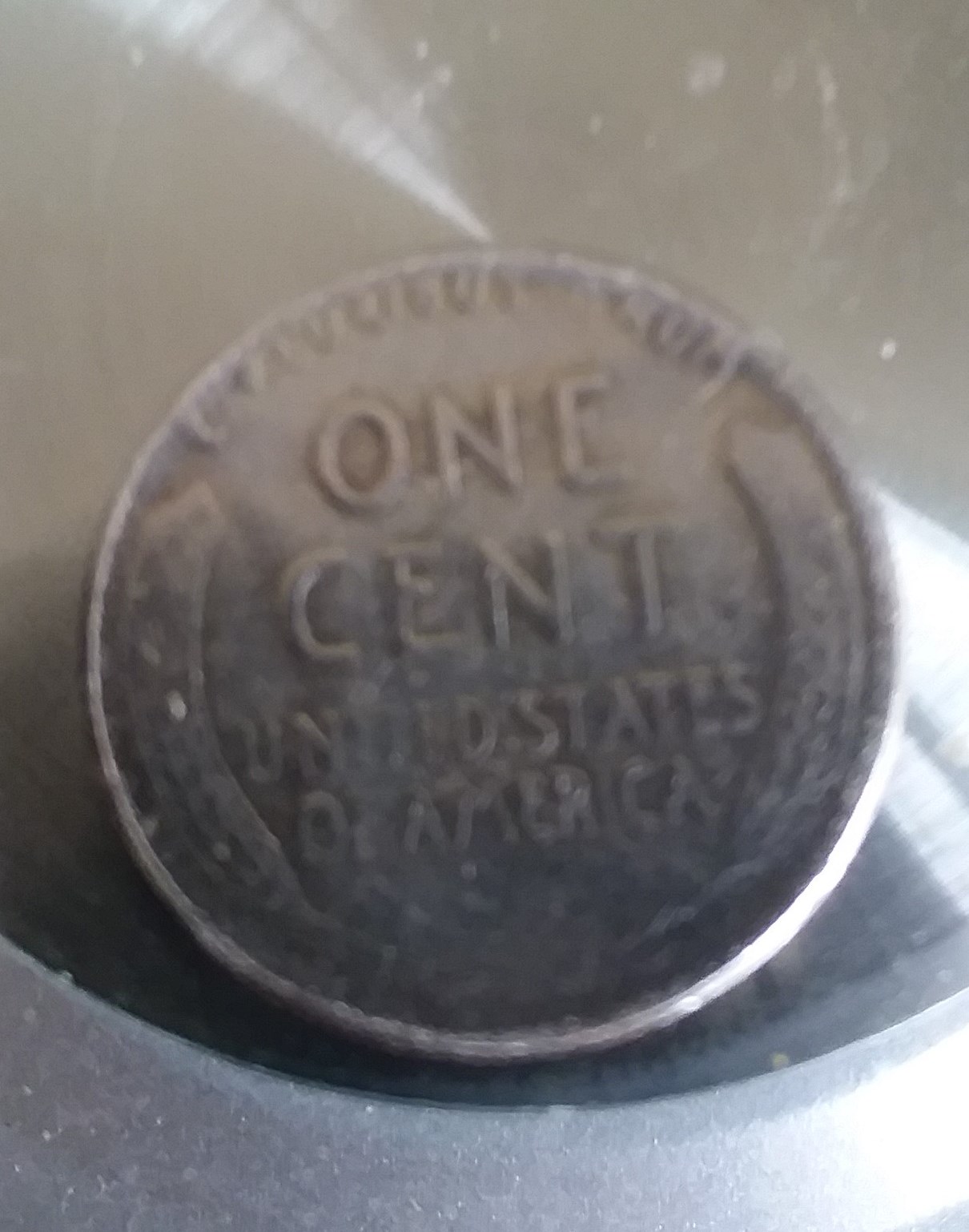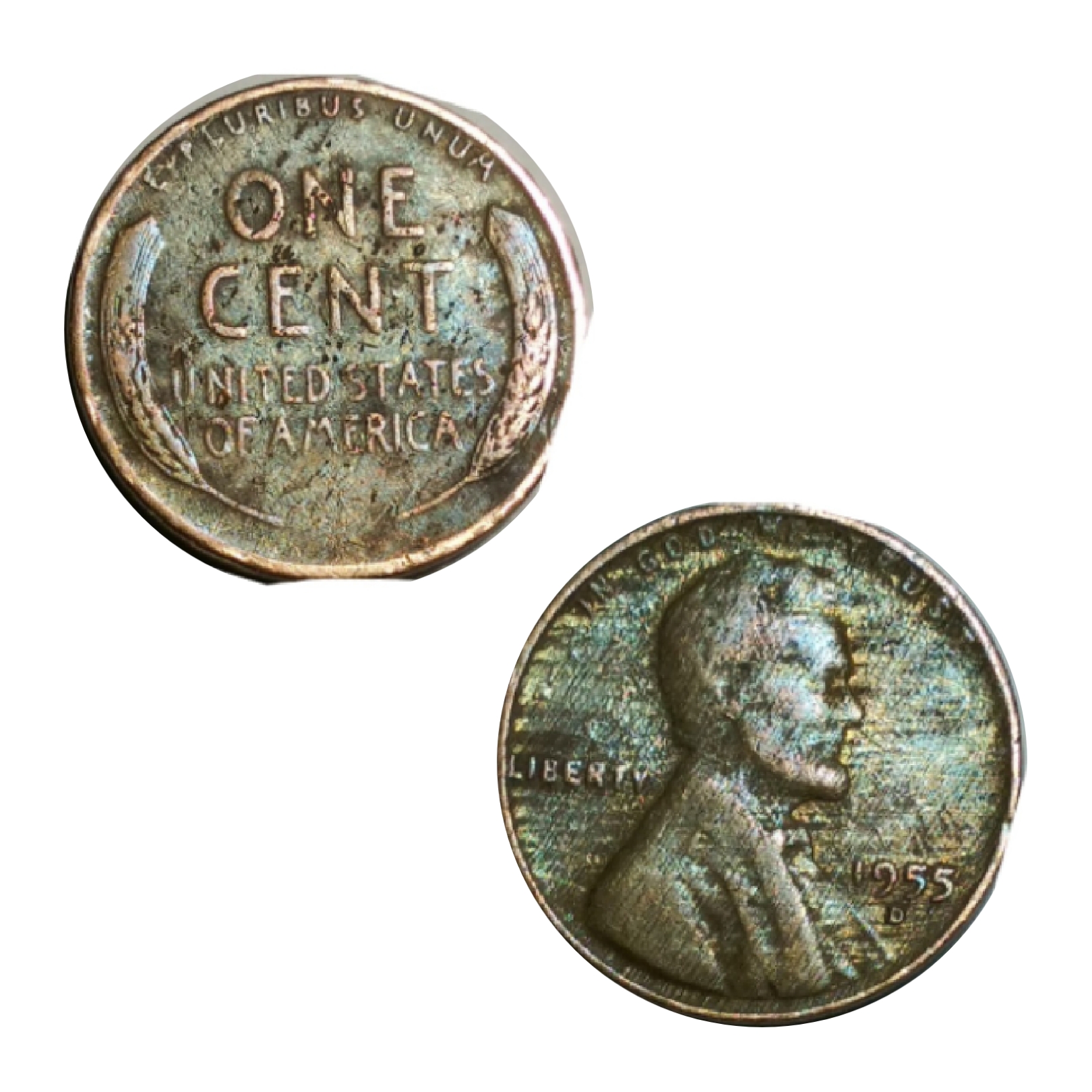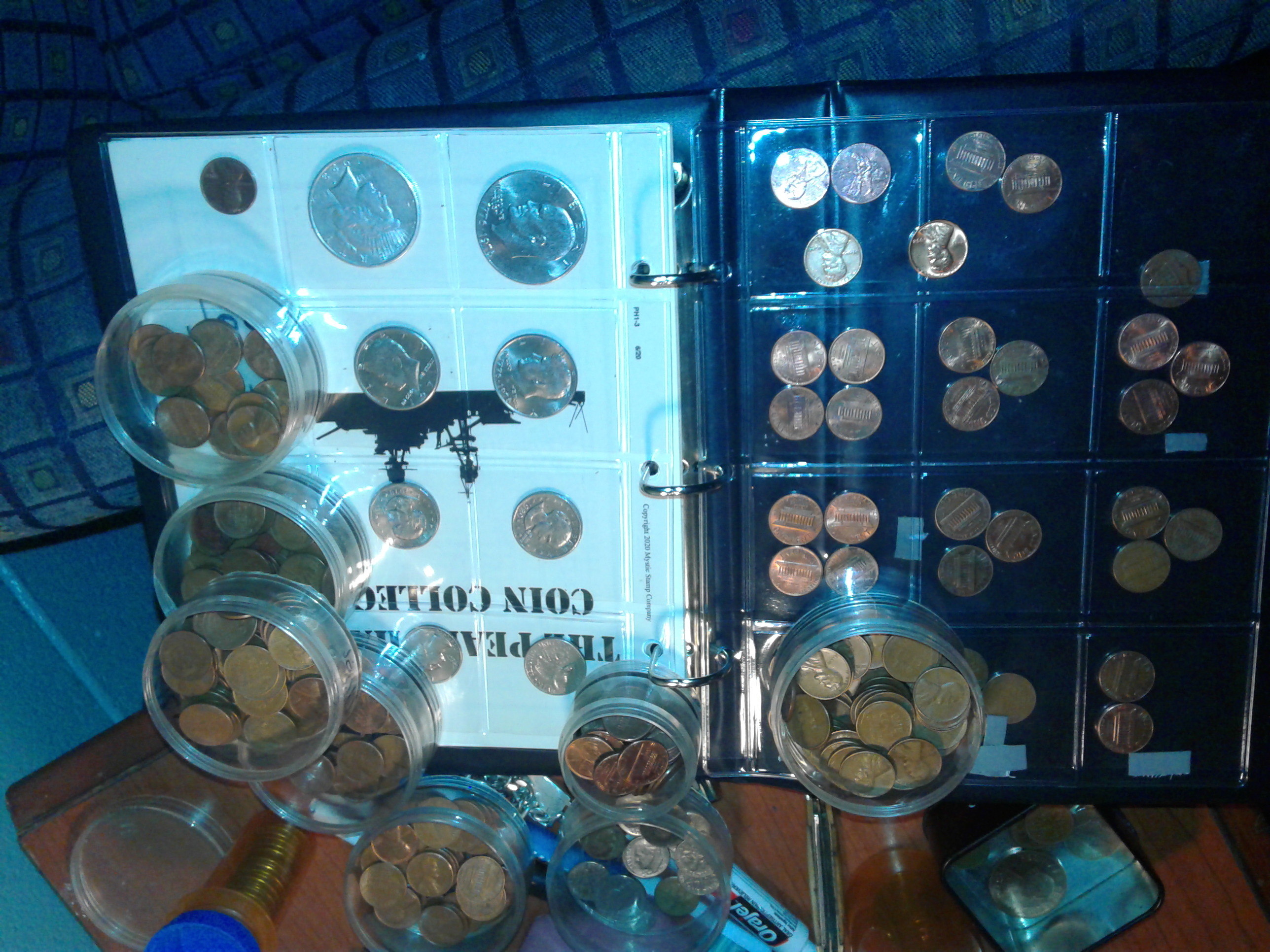I started going through a bunch of wheat pennies that have been unopened for at least 30 years and I came across something strange. I found a silver wheat penny from 1955. I'm putting up a pic. Any information would be greatly appreciated
Attachments (2)
8 years ago
·
#91
Hello, Paul --
I'm afraid the image is a tad blurry as I blow it up, but here's the next thing that needs to be done: the coin needs to be weighed. It's possible that it's either an off-metal error or simply a regular Lincoln cent that was plated.
If your coin is an off-metal error struck on a silver dime planchet, it should weigh 2.5 grams.
A plated Lincoln cent (post-mint alteration) from that era would weigh at least 3.11 grams, give or take a few hundredths of a gram.
If your coin was struck on a steel planchet, it would weigh in the 2.7-gram range.
If you could please reply back with a weight on your coin I'd be able to further assist.
Good luck!
Josh
I'm afraid the image is a tad blurry as I blow it up, but here's the next thing that needs to be done: the coin needs to be weighed. It's possible that it's either an off-metal error or simply a regular Lincoln cent that was plated.
If your coin is an off-metal error struck on a silver dime planchet, it should weigh 2.5 grams.
A plated Lincoln cent (post-mint alteration) from that era would weigh at least 3.11 grams, give or take a few hundredths of a gram.
If your coin was struck on a steel planchet, it would weigh in the 2.7-gram range.
If you could please reply back with a weight on your coin I'd be able to further assist.
Good luck!
Josh
8 years ago
·
#92
Thanks Josh. The penny weighed exactly 3.11 grams. So why was it plated. It's after World War II
8 years ago
·
#95
Hi, Paul --
Many Lincoln cents made both before and after World War II were plated by individuals outside the Mint to create so-called "fantasy" coins that mimic the novelty of the 1943 steel cents, which were made by the U.S. Mint to save copper for the war effort. The post-Mint plating could be silver, pewter, or even mercury -- the latter of which was commonly used to give pennies a silvery color during the the 1950s. Such pieces have no numismatic value. It's still an interesting piece and one you might want to hang on to since it is so unusual.
Best,
Josh
Many Lincoln cents made both before and after World War II were plated by individuals outside the Mint to create so-called "fantasy" coins that mimic the novelty of the 1943 steel cents, which were made by the U.S. Mint to save copper for the war effort. The post-Mint plating could be silver, pewter, or even mercury -- the latter of which was commonly used to give pennies a silvery color during the the 1950s. Such pieces have no numismatic value. It's still an interesting piece and one you might want to hang on to since it is so unusual.
Best,
Josh
8 years ago
·
#96
Thanks so much Josh. I appreciate the information. So I am to assume that under that is a copper wheat penny? That is really strange. It's been sitting in a "piggy" bank with a couple hundred other wheat pennies for at least thirty years. It tough to fathom who would go through the trouble to plate it then put it back in circulation for someone else to stash away for thirty years. Nothing ceases to amaze me these days.
8 years ago
·
#100
Hi, Paul!
It was likely plated in the 1950s or 60s, during the height of the coin collecting boom. Perhaps the 1955 penny represented a special year to the owner and thus why it was plated as memento -- or perhaps it was plated simply to recreate the novelty of the 1943 cent (something, amazingly, many people spent their free time doing). Presumably, the coin's owner passed the coin on to someone who probably had little, if any, numismatic knowledge about coins. That person likely spent the coin at face value, and it passed through the channels of circulation -- perhaps even being spent, mistakenly, as a dime at one point given its color.
I hope this sheds some light on your silvery penny!
All the best,
Josh
It was likely plated in the 1950s or 60s, during the height of the coin collecting boom. Perhaps the 1955 penny represented a special year to the owner and thus why it was plated as memento -- or perhaps it was plated simply to recreate the novelty of the 1943 cent (something, amazingly, many people spent their free time doing). Presumably, the coin's owner passed the coin on to someone who probably had little, if any, numismatic knowledge about coins. That person likely spent the coin at face value, and it passed through the channels of circulation -- perhaps even being spent, mistakenly, as a dime at one point given its color.
I hope this sheds some light on your silvery penny!
All the best,
Josh
7 years ago
·
#371
I also have found a penny from 1955 that is silver. It is in great shape. It seems hardly like it could have been plated after the fact and have perfect detail. There has to be some sort of story behind this.
7 years ago
·
#372
Hi, Roger --
Would you please post a photo of this coin here along with its weight, if possible, down to the hundredth of a gram? This will help us figure out what's going on and whether or not it's an off-metal error or a plated coin.
Thank you!
Josh
Would you please post a photo of this coin here along with its weight, if possible, down to the hundredth of a gram? This will help us figure out what's going on and whether or not it's an off-metal error or a plated coin.
Thank you!
Josh
7 years ago
·
#391
Hi,
I also have a silver 1955 wheat penny. It weighs exactly 3 grams, although my scale only does tenths. Can anyone tell me what I have here? Thanks in advance...

I also have a silver 1955 wheat penny. It weighs exactly 3 grams, although my scale only does tenths. Can anyone tell me what I have here? Thanks in advance...


6 years ago
·
#474
I have a 1955. (55 is dd). Weight is 3.11. Can anyone tell me if its worth anything
6 years ago
·
#479
True double-die 1955 Lincoln Cents can indeed be worth quite a bit of money. However, there are plenty of counterfeits circulating. If the coin is not slabbed you should take it to an authorized coin grader for appraisal.
6 years ago
·
#480
What does slabbed mean. Also i did more research it may be a poor mans due as well. Thank you
6 years ago
·
#485
Slabbed means that the coin has been certified by an official grading organization and enclosed in a standardized protective casing.
We have a nice library article on slabbing that can shed more light on the process: https://coinvalues.com/library/coin-slabbing-services
We have a nice library article on slabbing that can shed more light on the process: https://coinvalues.com/library/coin-slabbing-services
5 years ago
·
#598
I have the same 1955 p in silver it’s in excellent condition but the coin edges reveal the copper
5 years ago
·
#599
I also have this same penny 1955 silver wheat penny. I’ve been hoping to find out more about it[attachment]4CF67546-E51B-463A-8B1A-361A2CB57A55.jpeg[/attachment][attachment]244680DE-A425-4907-9FBA-58479C687A3E.jpeg[/attachment]
4 years ago
·
#613
Yeah the weight of the 1955 D wheat penny weighs in from 2.9-3.0. The regular one weigh 3.11 right. What happens if you run into one of these impossible to get penny’s
4 years ago
·
#629
Yeah the weight of the 1955 D wheat penny weighs in from 2.9-3.0. The regular one weigh 3.11 right. What happens if you run into one of these impossible to get penny’s

Attachments (2)
4 years ago
·
#630
Did you see the you tube by Baba beck? He says it’s a rare metal from the 1943’s I think that’s what he said. supposedly it’s worth over 700000 dollars.
4 years ago
·
#640
here is a a 3rd of my pennies from 1909 to 2020 most of these are wheat so far I need help too lol 

Attachments (1)
There are no replies made for this post yet.
Please login to post a reply
You will need to be logged in to be able to post a reply. Login using the form on the right or register an account if you are new here. Register Here »









